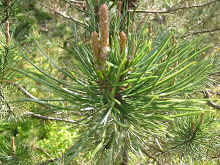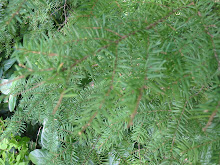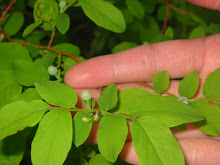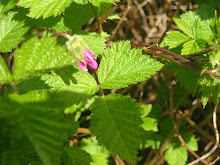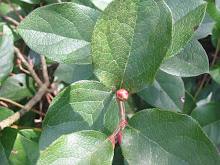Register now to our outdoor Pro-D open to teachers, informal educators, urbanists, students. If you're curious about bogs come and jump on a bog trampoline, taste labrador tea and learn 10 bog species guaranteed!
Link to registration page here
Join the Crazy Boggers, Metro Van Park Interpreters and VSB teachers for a journey to an enchanting urban bog!
Friday, October 3, 2014
Friday, September 19, 2014
Research in the Bog
Camosun bog was featured in the Regional Science Fair last year by young scientists Vicky and Hannah who are crazy boggers: Read about their findings below!
Peat Bogs: Contributors or Inhibitors of the Greenhouse Gas Effect?
Hypothesis
If the
temperature in Vancouver increases, the bogs will release more carbon dioxide
into the atmosphere.
Purpose
The ultimate
goal of this experiment was to see if increased temperature would result in
bogs releasing more CO2 than they absorb. We also want to inform
visitors of the potential role of bogs as sources of CO2. It is
worrying that the majority of estimates for future temperature increase do not account
for all of the possible release of Greenhouse Gases (CO2 and CH4)
through natural processes. Many “carbon sinks” are releasers of Greenhouse Gases,
with peat bogs in the lead[1]. Even though peat bogs only cover
around 3% of the earth’s surface, they store approximately 740 gigatons of
carbon[2]. For comparison, this is the equivalent to up to 65 years’
worth of the global carbon emission from fossil-fuels[2]. It is
crucial for people to realize the severity of climate change and the need for
something to be done. There are countless contributors to climate change
bursting forth in a chain reaction.
Human activity is
the cause of the dramatic increase of atmospheric CO2 in recent
years. It is clear that the release of CO2 and other Greenhouse Gases
is having profound effects on plants, animals, and humans alike. However, many
people do not realize that increasing global temperatures may disrupt the
natural processes in which CO2 is recycled.
CO2
release from nature wouldn’t pose any threat under normal conditions.
Unfortunately, increasing global temperatures may be causing our bogs to
release CO2 faster than they can absorb it. For that reason, the objective of this
experiment is to find out if the release of CO2 by bogs in Vancouver
is correlated with increasing temperatures expected with global warming. If
increasing temperatures do in fact cause bogs to release CO2, and
the release of CO2 from bogs does indeed cause temperatures to
increase, we have a vicious cycle on our hands.
Saturday, June 7, 2014
Another Glorious day in the bog...
A day in the bog's like a day on the farm...
We moved a huge pile of invasive plants and piled them into the bin. Enjoyed tea and treats after. Congratulations crazy boggers! Many thanks to Metro Van.
We moved a huge pile of invasive plants and piled them into the bin. Enjoyed tea and treats after. Congratulations crazy boggers! Many thanks to Metro Van.
Wednesday, June 4, 2014
Tuesday, June 3, 2014
Work Party
Last saturday we lowered the peat level and removed branches to get an area ready for planting. Crazy boggers of all ages worked together and then took tea, surrounded by fragrant labrador tea blossoms, sundew and arctic starflower. Tree frog tadpoles swam under our tea party. Come out and join us next week for Bin Day.
Saturday, May 31, 2014
Pacific Treefrog tadpoles swimming in Devil's Hole
tree frogs had been singing to each other all spring and now tadpoles are swimming around!
Bunchberry, Labrador Tea and Arctic Starflower are blooming in the bog
Tuesday, May 27, 2014
Bin day!! June 7
Come one come all! We are having yet another Bin day on June 7. We need an army of volunteers to move branches, stumps, bushes from the invasive species pile into the big bin. Come and join us. Bring a tea mug and garden gloves! Click here for a map to get to Camosun bog
Friday, May 16, 2014
Slaying stumps and moving monster roots!
Hope to see as many as possible this Saturday even though it is a long weekend. We are almost finished removing all the big roots from the South East corner of the bog. We will concentrate on removing the nutrient rich top soil,exposing the peat and getting the area ready for planting. The attached pictures show the crews who finally removed the "monster root". Great job.
Saturday, March 29, 2014
Birdsong at the edge of the bog
Birds in the hemlock forest at the bog's edge. The sounds are lovely during our work party
Tree frogs in the bog!!!
Tree frogs sang a chorus during our work party while we cleared salal, stumps and polytrichum. We could hear them sing loudly, but they remained hidden from view.
Blossoming vacciniums
Blueberry flowers
Huckleberry buds are under these leaves
More blueberries. Each of these pink flowers will become a blueberry for summer snacking during work parties!
Monday, February 24, 2014
Sphagnum of Vancouver
Back in 2008, I took a course at UBC in bryology; the scientific study of mosses and liverworts. As my term project, I went to Camosun Bog and sampled as many different species of Sphagnum moss as I could detect. At that time, I could identify S. capillifolium, S. squarrosum, S. papillosum and S. palustre without looking at microscopic characters. Inspired by the microscopic key we used in class to identify liverworts, the purpose of my term project was to create an online pictoral key to the Sphagnum moss species present in Camosun Bog. Sadly, due to time constraints, the project was never completed. I would like to congratulate Prof. Shona Ellis and her Biol 321 class for returning to the bog and bringing the project to (near) completion.
This is her Sphagnum of Vancouver website: http://blogs.ubc.ca/sphagnum/
You can find the microscopic key and a list of Sphagnum species in Camosun Bog. I have noticed that while the online key appears complete, the final descriptions of each species is incomplete. The hard copy does not appear complete. However, if you need the final descriptions to each species, there is a link to the Bryophyte Flora of North America (which includes more species and a key, but the key does not include pictures).
To use the key, you need a light microscope. The first character is the shape of the cells on the outside of the stem. Other characters are the shape of the leaves and the shape of the cells in a transverse cross section of the leaf. It matters whether you look at a stem leaf or a branch leaf.
This website highlights and beauty and diversity of Sphagnum mosses. I look forward to seeing the completion of this website!
This is her Sphagnum of Vancouver website: http://blogs.ubc.ca/sphagnum/
You can find the microscopic key and a list of Sphagnum species in Camosun Bog. I have noticed that while the online key appears complete, the final descriptions of each species is incomplete. The hard copy does not appear complete. However, if you need the final descriptions to each species, there is a link to the Bryophyte Flora of North America (which includes more species and a key, but the key does not include pictures).
To use the key, you need a light microscope. The first character is the shape of the cells on the outside of the stem. Other characters are the shape of the leaves and the shape of the cells in a transverse cross section of the leaf. It matters whether you look at a stem leaf or a branch leaf.
This website highlights and beauty and diversity of Sphagnum mosses. I look forward to seeing the completion of this website!
Monday, February 17, 2014
CBRG AGM
Some artifacts found in the bog on display during our AGM. Lots of hockey pucks fell into the bog over the years.
Sunday, February 2, 2014
Sunlit bog
Our bog is framed by Hemlocks which crept in through secondary succession. They are rooted in soil that rests on layers of peat. This picture was taken Jan 25 by Lawrence Brown.
Saturday, February 1, 2014
We caught one this big...
Stumps are removed as part of the restoration process. Decaying stumps add unwelcome nutrients to the abiotic conditions of a peat bog. It's hard work and very satisfying when a stump is finally extracted!
Subscribe to:
Comments (Atom)





































